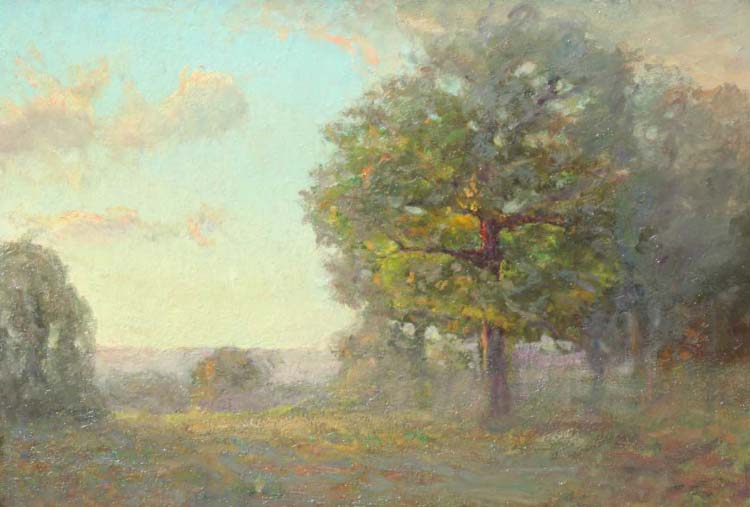Hoosier and the Hoosier Group
The word “Hoosier” is one of those words whose origins are lost to time. Even The Oxford English Dictionary offers no real guidance about where the word came from. What we do know is that “Hoosier” was first documented in the mid-1820s, and within a decade, it had entered general usage. John Finley, a Hoosier himself from Richmond, write a poem titled, “The Hoosier’s Nest” that was published in 1833, although his initial version uses “Hoosher.” This usage, along with many others from the period, indicate that Hoosier was most likely in oral usage for quite some time, as there appears to be no need to explain the term once it appears in print usage.
Speculation about the origins of the word began almost immediately, and a number of theories have been offered over the years. Perhaps the most widely accepted of these is from historian Jacob Piatt Dunn, Jr. Dunn pins the word’s origins on an old English dialect and the root “hoo,” which means high ground or a hill. Early usage of the word is not so specific to Indiana, but rather seems to refer to a backwoodsman or a mountain man – the kind of rough, hardy people who populated the early Appalachian frontier. For details and other theories, check out the Indiana Historical Bureau’s website and their article, “What is a Hoosier?” at http://www.in.gov/history/2612.htm.
“Hoosier” also pops up in references to the Hoosier Group, a group of Impressionist painters who were working during the late-19th/early-20th centuries. The core members of what came to be known as the Hoosier Group were T.C. (Theodore Clement) Steele, John Ottis Adams, William Forsyth, Otto Starke, and Richard B. Gruelle – all Indiana natives. Most of these young men studied together at the Indiana School of Art, with Steele, Adams and Forsyth later attending the Royal Academy of Munich, while Stark studied in Paris at the Academie Julian. Upon their return to Indiana, they realized that they had all developed a deeper appreciation for the natural beauty of their homeland, and they set about creating a nationally recognized style. While they all had their own strengths and painted a variety of subjects in a variety of styles, they were united by their “plein aire” renderings of the Indiana landscape. The group’s greatest recognition came when Indiana artists were given their own building at the 1904 World’s Fair, an accomplishment shared by no other state at the time.

A T.C. Steele oil-on-canvas painting of a wooded landscape. (p4A item # D9751709 )
With their focus on the rural landscape, many Indiana artists, including the Hoosier Group, ended up spending time in Brown County, a south-central county that is still one of the least populated counties in the state. Steele liked it well enough to build a home there, the House of the Singing Winds, which established the roots of the Brown County School. Fellow artist Adolph Shulz also purchased land in the area, solidifying the connection, and in 1927, an art association was incorporated. The colony and the association later merged into the Brown County Art Guild, which maintains a gallery in Nashville, Indiana. (Indiana University in Bloomington is also nearby, offering cultural and educational opportunities and afford T.C. Steele the opportunity to work as an artist in residence for a time.) The Brown County School has a number of artists associated with it, including Carl Graf (a founder of the art association), C. Curry Bohm, and L.O. Griffith.
Indiana artists took to the Impressionist movement in droves, finding inspiration in the rural landscape. As a result, one occasionally finds references to the Hoosier School or Indiana School, which is really a broad reference to Indiana art of the period. The Hoosier School generally refers to the Hoosier Group, exhibitors at the Hoosier Salon, the Brown County School or the Richmond School (a lesser-known community of mostly self-taught landscape painters). The frequent lack of distinction is due to the fact that all of these “schools” were in operation in the early twentieth century, that artists moved freely among them, and that their signature style and subject matter – impressionistic landscapes – were largely similar.
The Hoosier School gained ground in terms of respect and recognition in 1925, when the Daughters of Indiana formed the Hoosier Salon, with their first show held in Chicago’s Marshall Fields Galleries. T.C. Steele and John Ottis Adams were among the first exhibitors. After several years of critical and popular success, the show moved to Indianapolis, where it is still housed today in the galleries of the Indiana State Museum.
-Reference note by Hollie Davis, p4A Senior Editor – June 21, 2009
Further Recommended Reading
American Impressionism: The Beauty of Work by Susan Larkin
The House of the Singing Winds: The Life and Work of T. C. Steele by Selma N. & Theodore L. Steele, Wilbur D. Peat
Theodore Clement Steele: An American Master of Light by William H. Gerdts
